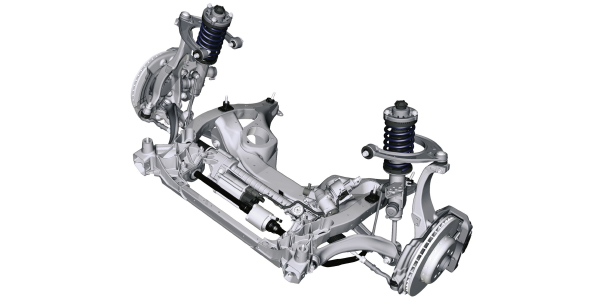Suspension repairs are the “bread and butter” for most shops. But, the bread has changed from stamped steel to cast aluminum, and the butter is now thread locking compounds and high-end greases. Here are ten tips that can prevent you from getting toasted.

1. Look up the service information: Every OEM has its own inspection and replacement procedures for suspension components. Some recommend replacing a bushing only after measuring the deflection. Others base replacement recommendations on crack depth and length.
2. Look for leaks: Some control arm bushings are hydraulic. They push fluid between chambers to control the movement of the bushing and absorb vibration. The fluid is not oil, it is a glycol-based fluid. Do not expect to see oil leaks and streaks.
3. Use a torque wrench: Many aluminum control arms and knuckles can be damaged if the improper tightening method is used. Never over-torque a ball joint stud. The extra torque could break the stud and potentially damage the knuckle.
4. Never use an impact wrench to install: Modern ball-and-socket joints on a suspension use a metal ball that is surrounded by a plastic sleeve in the socket. Spinning the stud with an impact wrench can cause heat and friction that can damage the new part because the grease is not evenly distributed.
5. Look for ride height sensors: Even is a vehicle does not have an air ride system, it could have ride height sensors for headlights and active ride control. If there is a sensor, it might require calibration with a scan tool.
6. Look for “loaded” options: Complete replacement control arms and suspension links can be a more economical replacement option over replacing just the bushings. Depending on the application, the labor saved at the press can offset the price of a complete control arm.
7. Tighten the bushing when the suspension is loaded: Many bushings need to be tightened with the suspension loaded.
8. Install alignment kits and cam bolts now: If you are installing a new bushing or control arm, take a look to see if there is an alignment kit available. This little bit of extra effort now can save a lot of unnecessary labor when the vehicle is aligned later.
9. Investigate the failure: Often, a rubber bushing will fail because of exposure to extreme heat or fluids from the engine or transmission. Look for the real cause of the failure.
10. Bolt Sealants: Many automakers use coated threads on fasteners that help to prevent corrosion. Some use a low-strength thread-locking compound. These solutions are designed to prevent corrosion.
